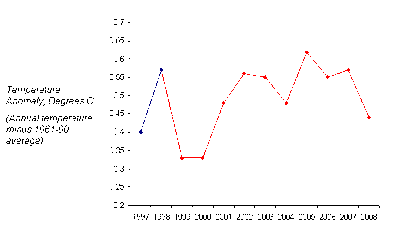The public option is looking more in trouble by the day – just yesterday, it was rejected by the Senate Finance Committee – which means I need to hurry up and get in the rest of what I wanted to say about health care. In particular, I wanted to finish eviscerating the quagmire of absurd arguments against the public option before it’s all over and everyone stops caring.
We’ve all heard the fuss over a “government takeover of healthcare,” which, as I’ve explained before, makes no sense. The public option is just that: an option. The government adding itself to the list of insurance providers can only provide more choice, not less.
The Senators must have been reading my blog, because I haven’t heard much of the “public option equals government takeover” argument of late. Now, the argument is more subtle. The public option would not be a government takeover today, but rather would lead to a takeover down the road by running private insurers out of business – in the words of Sen. Orin Hatch, the public option is “a Trojan horse for a single-payer system.”
Of course, this raises a serious question – or rather two. First, would it really lead to a single-payer system (government option is the only choice)? And second, even if it did, why would that necessarily be a bad thing?
Coming from a capitalist, the first argument makes little sense. If the market always produces the best solution, and the government is always inefficient and corrupt, how could a government run health insurance scheme run the supposedly superior firms out of business? The “magic of the market” is that the better option always wins.
Opponents of reform counter that the government would compete unfairly, allowing the government program to undercut private insurers on price. Of all the premiums private insurers collect, 15-25% go to sales and marketing and administrative costs – after all, they have to pay actuaries to estimate customers’ health risks so they can figure out how much to charge and who to exclude. These costs would be unnecessary for the government program. And of course, private insurers also need room for profits. In other words, government competition would be unfair because it can provide better service at a lower cost.
The obvious question at this point is, why is that a bad thing?
In fact, health care economics suggests that a single-payer government program should be the only option. Insurance works by pooling risk – there’s no money selling insurance to sick people, but if you pool enough people together paying premiums, most of whom are NOT sick, the healthy people essentially fund the sick. The more people you have in a risk pool, the lower the chance that a catastrophe to any one person will threaten the solvency of the overall pool, and the lower premiums you can charge.
Now, you may counter that all industries benefit from scale. Wouldn’t this argument justify the government taking over all industries? That WOULD be socialist!
Well, no. Unlike industries that transform raw materials into finished goods, profitability in the insurance industry is not technology-driven. Insurance companies are in the business of math – estimating and betting on risk. Whereas a factory can invent technologies that allow it to produce more stuff at lower cost, there’s no technology that enables you to squeeze another unit of math out of a dollar of cost.
If the goal is to provide as many people as possible with access to health care, there are only two ways to increase the amount of coverage you can provide for a given premium: reduce overhead costs or increase the size of the risk pool.
A single-payer system wins on both counts. A government program whose goal was to cover everyone would not have to hire actuaries to figure out who was too risky to cover, nor would a single-payer system need sales and marketing. A single-payer system would also create the largest possible risk pool, achieving the highest economic efficiencies. Sure, you’d be paying for it in taxes, but because of these efficiencies, the amount of the tax would be less than what you (and your company) currently pay in insurance premiums; your take home pay would therefore increase by more than your taxes.
Reform opponents are caught in a catch-22. If they’re right about the absolute efficacy of markets, then private insurers will easily be able to reform themselves and out-compete any lumbering and inefficient government-provided option. But if opponents’ fears are founded, and the public option would inevitably run the private companies out of business, that begs the question – if private health insurance can’t provide the same or better service than the government at a given price, why should health insurance be a private industry in the first place? If the government option turned out to be better, well then there’s no reason to bemoan the demise of private insurance. And there’s even a safety value: if insurance companies were all driven out of business, and the government option grew inefficient and corrupt over time, some clever entrepreneur should inevitably emerge to take on the government and steal its customers, making a tidy profit. What this proves is that a government insurance program can never leave you worse off.
So why do “free market” conservatives oppose expanding people’s choice so vehemently? My thinking is that conservatives aren’t so much in favor of free markets as they are opposed to anything that would make existing businesses have to work harder to earn their keep. If you increase business’s costs or competition, that might actually force them to innovate, and that would be, well, CHANGE.
Related posts:
The Takeover: What opponents of health care reform don't get
Are Sarah Palin and Martin Feldstein closet universal health care supporters?












